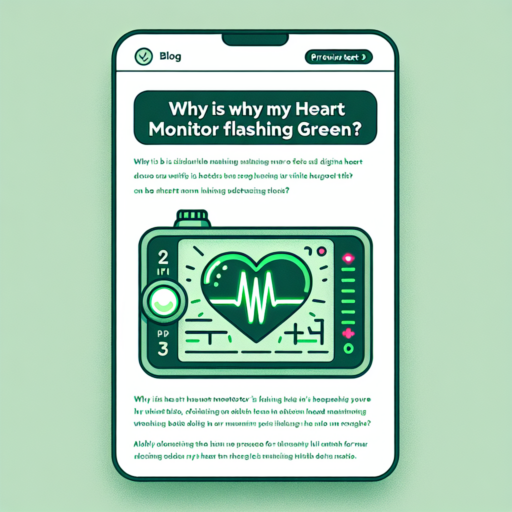No se han encontrado productos.
Is it worth getting a chest heart rate monitor?
Deciding whether to invest in a chest heart rate monitor often boils down to the level of accuracy and consistency you expect from your fitness tracking devices. Unlike wrist-worn devices, chest heart rate monitors are celebrated for their proximity to the heart, promising a higher fidelity in the readings they provide. This accuracy is crucial for athletes and fitness enthusiasts who rely on precise heart rate data to optimize their training and recovery.
Another aspect to consider is the comfort and convenience of using a chest heart rate monitor versus other types of heart rate tracking devices. While some may find the chest strap a tad intrusive, others praise its ability to stay put during vigorous activities where wrist monitors might fail to keep continuous contact. This uninterrupted data collection is key for tracking your heart rate variability (HRV) over time, an important metric for assessing overall heart health and fitness levels.
The integration of chest heart rate monitors with other fitness devices and apps also adds to their value proposition. Many models offer seamless connectivity, allowing users to easily sync their heart rate data with popular fitness apps and smartwatches. This level of integration helps to create a more holistic view of your health and fitness progress, making it easier to set and adjust your training goals based on accurate heart rate data.
What is a chest heart rate monitor?
A chest heart rate monitor is a specialized device designed to measure and record the heart rate of an individual in real-time. Unlike wrist-based monitors, these devices consist of a strap that wraps securely around the chest, ensuring that the monitor stays in close contact with the skin. This proximity allows for more accurate and immediate detection of the heart’s electrical signals.
The core functionality of a chest heart rate monitor hinges on its ability to capture electrical signals that the heart generates each time it beats. This is achieved through a process called electrocardiography (ECG), which these monitors miniaturize into a wearable format. As a result, athletes and fitness enthusiasts prefer chest heart rate monitors for their precision, especially during intense exercise or training sessions where accuracy is crucial for performance tracking and health monitoring.
Modern chest heart rate monitors are equipped with Bluetooth or ANT+ connectivity, enabling them to pair seamlessly with smartphones, smartwatches, and other fitness devices. This integration allows users to access their heart rate data in real-time, monitor their progress over time, and even adjust their training intensity based on heart rate zones. The ease of use and the richness of data provided make these monitors invaluable tools for anyone serious about their fitness and health.
What should your heart rate be for chest?
When discussing the ideal heart rate for chest workouts, it’s essential to understand that optimal heart rates can vary significantly based on an individual’s fitness level, age, and specific fitness goals. Generally, working within 50% to 85% of your maximum heart rate (MHR) is considered safe and effective for most cardiovascular exercises. However, targeting the chest specifically through resistance training might not align precisely with these cardiovascular zones.
For those focusing on building chest muscle through weightlifting or similar resistance exercises, the emphasis might not be on maintaining a specific heart rate. Instead, it’s vital to recognize the intensity of the exercise and its effect on your body. A moderate heart rate elevation is beneficial for endurance and promoting cardiovascular health, but the primary goal during resistance training is often to stress the muscles sufficiently to promote growth and strength.
During chest-focused workouts, you might notice your heart rate increasing as you perform exercises like bench presses, push-ups, or flys. This elevation is a natural response to exertion and indicates that your body is working to supply oxygen to your muscles. Monitoring your heart rate can ensure you’re not overexerting yourself, especially if you’re new to exercise or have cardiovascular concerns. Utilizing heart rate monitors or smartwatches can help you stay within a safe range, adjusting the intensity of your workout accordingly.
What is the best chest strap heart rate monitor?
When discussing the best chest strap heart rate monitor, several factors come into play, including accuracy, comfort, compatibility, and battery life. These devices have become indispensable for athletes and fitness enthusiasts who seek to optimize their training and health by tracking their heart rate precisely.
Accuracy and Comfort
The leading chest strap heart rate monitors offer unparalleled accuracy in tracking heartbeats, which is critical for performance athletes who rely on precise data to tailor their training programs. The comfort of the strap is another crucial aspect, as it needs to be snug enough to ensure accurate readings without being too constrictive or causing discomfort during long training sessions or competitions.
Compatibility
Compatibility with other devices and apps is a key feature of the best chest strap heart rate monitors. Most high-quality monitors are designed to seamlessly sync with a wide range of fitness apps, watches, and even gym equipment, ensuring that users can effortlessly integrate their heart rate data into their overall fitness tracking ecosystem.
Battery Life
Battery life is another essential consideration. The most sought-after models boast extended battery lives, minimizing the frequency of recharges or battery replacements. This is particularly beneficial for athletes and fitness enthusiasts who engage in long-duration workouts or those who simply prefer a low-maintenance device.




